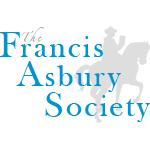Scripture reading: I Samuel 28:3–25
The Anti-Holiday
The light shines in the darkness, and the darkness has not overcome it. (John 1:5)
Like many, I grew up thinking Halloween was a happy occasion to dress up in a costume and walk around the neighborhood collecting candy. No parents warned of the dangers involved in going door-to-door, and no pulpits preached about the occult connotations of the day. My memories include smiling pumpkins, hayrides, bobbing for apples, eating candy, and dressing up like Superman.
But today as I look at the way our culture celebrates October 31, my spirit is deeply troubled. I can no longer view Halloween as an innocent fall festival. In my neighborhood, yards are decorated with tombstones, skeletons, and straw cadavers hanging from trees. Stores are marketing merchandise that is macabre, violent and demonic. Blood and gore sells. Pictures of zombies, vampires, demons and haunted houses are everywhere. And now we are witnessing a new spin on this day of darkness: sex. Costume parties encourage Snow White to dress like a vixen rather than a virgin. Goldilocks looks like she has been sleeping in lots of beds, and Little Red Riding Hood is dressed like a hooker. Halloween now is giving girls cultural permission to be bad . . . at least for a day. I can only wonder what visitors from other countries must think of a nation that markets death, celebrates darkness, and glamorizes promiscuity.
If you want a good scary story, read I Samuel 28. King Saul dresses in disguise, visits a witch, and talks to the dead! For full effect, gather your children around you, turn out the lights and read the story in the dark. But notice: the story has a moral! Saul is a fool, and his folly is manifest for all to see. The story exposes evil for what it truly is and warns us not to be deceived by its seductive power.
Like a parasite, evil derives its power from the good. It is the anti-good. Halloween can only exist because of the day that follows it: All Saints Day. Originally called All Hallows Day (the word “hallow” means to make holy, to sanctify), November 1 was set apart by the early church to remember and honor the saints of God, the living and the dead. Through the centuries, October 31 (All Hallows Eve, or Halloween) thus became an occasion to celebrate all that was unholy, the anti- saint day.
So what should the children of light do when the culture around them is celebrating darkness? Each family will have to come to its own conclusions, but I suggest the following:
,. Reflect on the meaning of death.
,. Celebrate the communion (spiritual fellowship) of the saints . . . both living and dead.
,. Take no part in the unfruitful works of darkness, but instead expose them (Ephesians 5:11).
There are two equal and opposite errors into which our race can fall about the devils. One is to disbelieve in their existence. The other is to believe, and to feel an excessive and unhealthy interest in them. They themselves are equally pleased by both errors . . .—C. S. Lewis
point to ponder • What are some practical things you can do to respond in a Christian manner to our culture’s celebration of Halloween?
prayer focus • How will you be a light and create healthy and exciting alter- natives in a neighborhood fixated on darkness and death?
